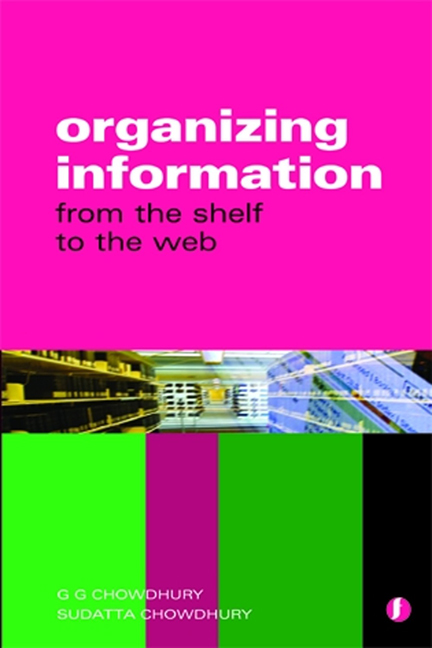Book contents
- Frontmatter
- Dedication
- Contents
- Preface
- Glossary
- 1 Organizing information: what it means
- 2 Information organization in non-library environments
- 3 Cataloguing
- 4 Bibliographic formats: MARC 21 and others
- 5 Library classification
- 6 Subject heading lists and thesauri in information organization
- 7 Organization of internet information resources
- 8 Metadata
- 9 Markup languages
- 10 Ontology
- 11 Information architecture
- 12 The semantic web
- 13 Information organization: issues and trends
- Index
7 - Organization of internet information resources
Published online by Cambridge University Press: 10 September 2022
- Frontmatter
- Dedication
- Contents
- Preface
- Glossary
- 1 Organizing information: what it means
- 2 Information organization in non-library environments
- 3 Cataloguing
- 4 Bibliographic formats: MARC 21 and others
- 5 Library classification
- 6 Subject heading lists and thesauri in information organization
- 7 Organization of internet information resources
- 8 Metadata
- 9 Markup languages
- 10 Ontology
- 11 Information architecture
- 12 The semantic web
- 13 Information organization: issues and trends
- Index
Summary
Introduction
As discussed in previous chapters, over the years libraries have developed and used a number of organizational tools and techniques. These tools – classification schemes, catalogue codes, bibliographic formats and vocabulary control tools, and the corresponding standards for exchange formats like ISO 2709 – enable libraries to organize, provide access to and share millions of information resources throughout the world. Although these tools and standards were built to deal primarily with printed or physical records, some researchers have also tried to use them to organize internet information resources. Such applications have limited scope: although the traditional bibliographic tools and standards have huge merits, they are not quite suitable, at least in their usual form, for organizing internet information resources. But why so, and how can we organize internet information resources so that they can be easily accessed? This chapter aims to provide answers to some of these questions. It first explains why conventional bibliographic tools are not suitable for organizing internet resources. It then discusses a number of tools and techniques developed over the past few years for organizing internet resources.
Characteristics of the web
Simply speaking, the web is a massive collection of pages or information resources stored on millions of computers across the world, which are linked by the internet. The uniqueness of web information organization and access has been widely discussed in the literature (e.g. Chowdhury, 2004; Rasmussen, 2002). The following are some unique characteristics of the web that call for special measures for the organization of the web information resources.
Distributed nature of the web
Web information resources are distributed all over the world. Hence, complex measures are required to locate and organize these. A number of tools and standards – such as classification schemes, catalogue codes, MARC formats, subject heading lists, etc. – exist for organizing and providing access to networked library resources. Such uniform tools and standards are required for the organization and processing of web information resources.
Size and growth of the web
The web has grown exponentially over the past decade. Identifying, organizing and retrieving information becomes more complex as the size of the web increases.
The resource intensiveness – too much dependence on human experts – of conventional information organization tools makes them unsuitable for handling the large volume of information on the web.
- Type
- Chapter
- Information
- Organizing InformationFrom the Shelf to the Web, pp. 131 - 138Publisher: FacetPrint publication year: 2013



